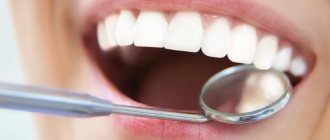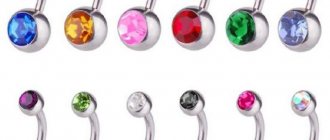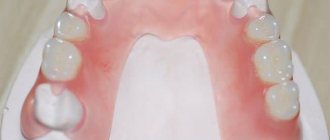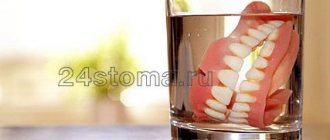Scarring
Healing of a granulating wound occurs through scarring and epithelization. At the final stage of healing, collagen fibers appear among the cells of the granulating tissue, the number of granules decreases, and the number of fibers increases. Ultimately, the fibrous substance passes into the connective tissue and forms a scar.
When wounds heal by primary intention, delicate scar tissue is formed, which tends to resolve.
In case of healing by secondary intention, a rough scar is formed, which will not be easy to get rid of.
Possible complications and what to do about it
Problems may arise if the condition is neglected.
Possible consequences:
- Serroma is the formation of exudate in the cavity. The wound cavity will not heal. With secondary infection, suppuration begins.
- A hematoma develops when measures to stop bleeding are ineffective. The blood compresses the tissues, causing their necrosis. It is an ideal environment for the propagation of pathogenic flora. The wound, sewn up long ago, begins to fester.
- Necrosis occurs due to irregularities in suturing. The tissues do not receive nutrients, swell and die. Excision is indicated due to the risk of sepsis.
- Abscess and phlegmon appear when a secondary infection occurs. Often pathologies are a consequence of the patient’s reluctance to go to the emergency room in a timely manner.
- The divergence of the edges occurs due to carelessness after removing the seams. Treatment is only surgical.
- Malignization occurs with a long-term inflammatory process and lack of epithelization in a timely manner.
All conditions are accompanied by pain, swelling, and hyperemia of nearby tissues. When sepsis occurs, the temperature rises to pyretic values, a decrease in pressure, and dehydration are observed. If symptoms appear, you should immediately contact a medical facility. The surgeon will have to re-treat the sutured wound and prescribe antibiotic therapy.
Types of wound healing
According to the classification of I.V. Davydkovsky, the following types of wound healing are distinguished:
- closing the defect of the epithelial cover, which occurs when the upper epithelial layer is damaged;
- healing under a scab, or healing without a scar. Observed on mucous membranes in case of minor defects.
- healing by primary intention, or healing without suppuration. Characteristic of wounds with damage to the skin and tissue underneath.
- healing by secondary intention, or healing through suppuration and granulation. Occurs with extensive wounds, accompanied by foreign objects entering the wound, tissue necrosis, microbes and infections.
What types of wounds are there?
The healing process and time of damage largely depend on its type. Wounds, according to the factors that caused them, are divided into the following types:
- puncture wounds are injuries caused by a thin object pointed at the end (an awl, a knitting needle), which are distinguished by significant depth in relation to width. In the vast majority of cases, puncture wounds practically do not bleed and this can cause a dangerous misconception that they are not dangerous and, as a result, late seeking medical help. In fact, with a stab wound, damage to internal organs is often observed, as well as internal bleeding, often intense. In this case, blood accumulates, for example, in the abdominal cavity. A narrow wound channel blocks the access of oxygen to the damaged surface, which becomes fertile ground for the development of extremely dangerous gangrenous bacteria;
- incised wounds are injuries caused by a narrow, pointed object. They can also penetrate to a considerable depth, but, unlike stab wounds, they bleed much more, since in the process of inflicting such a wound a large number of blood vessels are damaged. The edges of such a wound are smooth;
- chopped wounds are injuries inflicted by a heavy pointed object (axe, shovel). The edges are often uneven, crushed, the wounds are usually deep;
- lacerations - usually occur with intense mechanical impact on a large area of skin. The edges are uneven, often the skin peels off from the underlying tissues with the formation of a scalped wound, and intense bleeding is not uncommon;
- Bite wounds are wounds that occur as a result of the impact of the teeth of an animal or a person on the body. On the teeth, as a rule, there is plaque with specific microorganisms, which often provoke significant inflammation in the wound;
- Contusion wounds are wounds caused by blunt force trauma. The skin and underlying tissues in the damaged area often become dead. Bleeding is usually minor, interstitial with the formation of a hematoma;
- A gunshot wound is a wound caused by a firearm. It is characterized by significant damage to the tissue around the wound channel due to the impact of bullet energy on them, as well as the presence of particles of clothing and gunpowder in the channel;
- burn wounds are wounds caused by exposure of the skin to thermal energy or concentrated alkalis/acids. The intensity of damage to the skin and underlying tissue depends on the severity of the burn.
Stages of healing
The wound healing process goes through three main stages: inflammation, regeneration, and restoration of the epithelium.
The inflammation phase begins immediately after injury and in an uncomplicated state lasts for 4–5 days. During the hemostasis stage, platelets attach to sites of injury and cause a chemical reaction that activates fibrin, which forms a matrix network and binds platelets to each other. This is how blood clots form, blocking damaged blood vessels and stopping bleeding.
At the stage of proliferation and regeneration, the process of angiogenesis, collagen deposition, and the formation of granulation tissue (young connective tissue formed in places of defects) occurs. The regeneration stage can last 2–4 weeks depending on the size of the defect.
The final stage is the formation of the epithelium. Depending on the severity of the injury, the process can last from several weeks to a year or more.
Products for treating sutured wounds
The treatment consists of 2 stages - cleaning the skin adjacent to the scar. The epidermis is cleaned with a soap solution and hydrogen peroxide. It is necessary to avoid contact with liquid on the damaged area. After manipulation, a sterile bandage is applied to the sutured wound.
Do not touch or pull the threads that tighten the seams and knots. There is a risk of injury and divergence of the skin edges.
Antiseptics used during processing:
- Hypertonic solution or sodium chloride with a concentration of 10%. For external use only. The drug has a detoxifying, disinfecting, drying effect. There are no contraindications.
- Potassium permanganate solution. The crystals need to be dissolved in boiled water. The color of the liquid should be pale pink. The drug has an antiseptic, drying effect. Avoid contact with eyes, do not use high concentrations, as this may cause burns and a low rate of tissue regeneration.
- Hydrogen peroxide. The drug softens and removes remaining pus and blood. Does not have a bactericidal effect. Apply using a gauze pad. Blasting is allowed. After the release of oxygen ceases, the sutured wound should be dried with a cotton swab.
- Brilliant green has antibacterial and fungicidal effects. Does not relieve inflammation and does not irritate the epidermis. The product is applied to a previously cleaned seam using a cotton swab. The drug is incompatible with iodine and alkaline solutions. May burn after application.
- Chlorhexidine is a ready-made solution for external treatment of tissues. Has an antibacterial effect, is not active against fungal flora. Apply in a stream. The medicine is incompatible with soap and alkaline solutions.
- Miramistin is a ready-made solution. Active against pathogenic and fungal flora. Apply using a cotton swab or jet.
- Betadine based on povidone-iodine. Acts on bacteria, fungi, viruses and protozoan microorganisms. Apply to the seam using a cotton swab. The product should not be used for diseases of the thyroid gland, imbalance of thyroid hormones, or in early childhood.
There is a wide selection of antiseptics on the shelves of pharmacies, from expensive to budget ones. You should buy the drug recommended by the doctor based on the patient’s condition and medical history.
Wound treatment
The choice of wound treatment method largely depends on their type (infected or necrotic, wet exuding or fibrous granulating, trophic ulcers or bedsores). Only a doctor can choose the optimal solution for treating each type of wound.
In addition, at each stage of wound healing, it is necessary to use a different agent: one that promotes the removal of exudate, the formation of granulation tissue, accelerating epithelization, etc.
When treating wounds, you need to remember that the wound does not heal on its own, but thanks to the body’s resources aimed at healing it. The immune, endocrine, and circulatory systems are involved in this process. A qualified doctor, along with treating the wound itself, will definitely prescribe a vitamin complex to maintain the body.
Selection
Wound healing agents are selected taking into account the degree of tissue damage and the type of wound.
If the wound is clean and not extensive, then it makes sense to accelerate the regeneration process only at the third stage - the epithelization stage, and the first and second stages require only primary cleansing and regular change of aseptic dressings.
For festering wounds, more extensive and/or deep injuries, consultation with a specialist will be required, since the selection of funds will depend on the severity of the process and may require the prescription of local antibacterial drugs.
So, let’s look at drugs that are popular among buyers and pharmacists to speed up wound healing.
According to the “Register of Medicines of Russia - RLS” for 2017, 1,185 drugs, 143 trade names and 40 active ingredients were registered on the topic “Regenerants and reparants”. The largest number of drugs among tissue-specific stimulators of regeneration also affects the repair of the skin. Indications for the use of these products are difficult-to-heal wounds, trophic ulcers, burns, bedsores and other violations of the integrity of the skin. We included three key tools in the review, according to ten surgeons we interviewed from Moscow, St. Petersburg and Novosibirsk.
Dexpanthenol
Anti-inflammatory, dermatoprotective agent, stimulates regeneration processes. Available in the form of ointments, creams and sprays, in combinations with chlorhexidine digluconate and benzyldimethylmyristoylaminopropylammonium.
Dexpanthenol is quickly absorbed and converted into pantothenic acid, binds to plasma proteins and stimulates skin regeneration. Pantothenic acid is an essential component and stimulator of the synthesis of coenzyme A. Coenzyme A, in turn, is involved in almost all metabolic processes: the tricarboxylic acid cycle, as well as in the metabolism of carbohydrates, fats and fatty acids, phospholipids and proteins.
Dexpanthenol is widely used to treat dry skin, burns (including sunburn), scratches, abrasions, boils, bedsores, cracks and inflammation of the nipples of the breast in nursing mothers. The drug is also used for the prevention and treatment of diaper rash in children.
As a rule, it is well tolerated and can be used during pregnancy and lactation, as well as in children from an early age. Allergic reactions (urticaria, itching) are possible in case of individual intolerance. Preparations based on dexpanthenol have been studied better than others. This is not surprising, because pantothenic acid was isolated at the beginning of the twentieth century and was actively studied.
Deproteinized hemoderivative of calf blood
A drug that improves trophism and tissue regeneration. Available in the form of cream, gel, ointment. There is also a release form in the form of injection solutions and tablets (used as antihypoxants and antioxidants to correct metabolic disorders in chronic diseases of the cardiovascular and nervous systems).
Accelerates repair and regenerative processes in damaged tissues. Increases the absorption and utilization of oxygen, accelerates the transport and utilization of glucose. All this leads to an improvement in the energy metabolism of cells and a decrease in the formation of lactate under ischemic conditions (excessive amounts of lactate in tissues lead to changes in pH, which interferes with adequate regeneration). Strengthens collagen synthesis, stimulates cell proliferation.
Deproteinized hemoderivative of calves' blood is used externally in the form of an ointment and gel for wounds and inflammatory diseases of the skin and mucous membranes, burns (including sunburn), skin cuts, abrasions, scratches, ulcers, as well as for the prevention and treatment of bedsores. Use in children, pregnant and lactating women is possible.
External use is well tolerated. In rare cases, patients with a history of hypersensitivity reactions may develop allergic reactions.
Zinc hyaluronate
Wound healing, regenerating, antimicrobial agent. Available in the form of a gel and solution for external use.
When hyaluronic acid interacts with water molecules, a dispersion matrix appears, which forms a natural supporting frame for cells involved in wound healing, increases the activity of granulocytes and macrophages, enhances the proliferation of fibroblasts and angiogenesis, and accelerates the formation of collagen. The spectrum of antimicrobial activity of zinc includes strains of Staphylococcus aureus, streptococcus, Escherichia coli and Pseudomonas aeruginosa.
When applied topically, systemic resorption is extremely low. Affects all 3 phases of the wound process. Reduces pain during dressings (prevents the dressing from drying out). The solution is used for all types of poorly healing infected wounds, trophic ulcers, bedsores, fistulas; The gel is often used in the complex treatment of acne. There is no data on the use of the drug during pregnancy or lactation. Contraindicated in case of individual intolerance to the components.
Table 1. Use of wound-healing drugs for the treatment of non-infected wounds
| Drug compound | Stages of the wound process | Release form | Ease of use | Peculiarities |
| Hemoderivative of the blood of dairy calves | 1, 2, 3 | Gel, ointment, cream | + | Versatility |
| Zinc hyaluronate | 1, 2, 3 | Solution | — | Versatility |
| Gel | + | |||
| Dexpanthenol | 1, 3 | Ointment, cream, aerosol | + | Application is limited to the stage of the wound process |
| Dexpanthenol + benzyldimethyl-myristoylamino-propylammonium | 2 | Gel | + | Application is limited to the stage of the wound process |
| Dexpanthenol + chlorhexidine bigluconate | 2 | Cream | + | Use limited to wound stage |
How to speed up healing
The speed of wound healing varies. It depends on the nature of the injury and the individual characteristics of the patient, such as age, nutrition, and medications taken.
To speed up healing, it is necessary to provide optimal conditions for tissue regeneration at each stage. This role is fulfilled by therapeutic dressings designed for each stage of healing.
The method of hydrotherapy has a positive effect. Its essence consists in the sequential use of two dressings HydroClean and HydroTac. Using the first, the wound is cleaned, and then a second is applied, creating optimal conditions for granulation and epithelization.
Features of caring for a sutured wound
At the initial stages, in case of extensive injuries or complex surgical treatment, treatment and dressing are carried out by a nurse in a hospital. The surgeon who performed the procedure should tell you about the rules for caring for a sutured surgical wound.
Necessary tools and materials for manipulation:
- Smooth surface. At home, you can use a coffee table or trestle bed. First, it is washed with warm water, then wiped with disinfectants.
- Clean towels for tools.
- Gloves, bandages or gauze swabs, cotton wool.
- Scissors.
- Medical tweezers.
- Antiseptic drugs.
- Hydrogen peroxide.
- Medicines as needed.
The principle of skin treatment is to carry out all manipulations in compliance with asepsis.
Caring for a sutured wound in the postoperative period:
- To reduce the intensity of pain, the use of painkillers as prescribed by a doctor is indicated.
- Treat 2-3 times a day with antiseptics. In hospitals, Diamond Green solution is used. Manipulations are carried out daily until the surface is completely healed.
- It is strictly prohibited to wet a stitched wound. You cannot sprinkle with antiseptics or antibiotics in powder form. Do not use healing ointments.
- Patients with diabetes need to monitor their blood glucose levels. Their surface recovery rate is lower.
After healing, no additional care is required.
What to do if the wound does not heal
Non-healing or chronic are wounds that do not respond adequately to therapy despite prolonged treatment. Such wounds are usually caused not by external factors, but by reasons hidden inside the body, leading to disruption of metabolic processes and, as a consequence, disruption of the wound healing process. This category includes trophic ulcers, bedsores, and diabetic foot ulcers. Before using any dressings, consult a doctor: therapy and treatment of wounds can only be prescribed to you by a doctor!
For the treatment of chronic wounds, HARTMANN has developed a two-bandage system - HydroClean Plus and HydroTac.
The HydroClean Plus cleansing dressing can be used at all stages of wound healing, effectively removing necrotic tissue and pathogenic bacteria from the wound surface. They get caught in the absorbent layer and die under the influence of the antiseptic. The HydroTac dressing has absorbent and moisturizing properties and also protects the wound from secondary infection.
With the help of the hydrotherapy system, many patients have been able to significantly alleviate suffering and improve their quality of life.
Causes of non-healing wounds
The immediate cause of non-healing wounds is insufficient activity of restoration processes in the body, slow tissue regeneration. Moreover, the conditions under which regeneration slows down can be varied.
Among the general factors (i.e., affecting the state of the body as a whole), the following can be identified:
• weakened immunity due to concomitant disease or chronic immunodeficiency state;
• chronic intoxication of the body;
• metabolic disease;
• diabetes; this condition can be considered a severe form of metabolic disorder, namely glucose metabolism. Disturbances in the normal absorption of glucose lead to increased tissue fragility and a slowdown in the regeneration process;
• circulatory disorders - both general and local. The cause may be atherosclerosis, deformation of vascular walls, and diseases of the cardiovascular system. Local circulatory disorders can be caused by prolonged compression of tissues and pinching of small blood vessels (an example of a chronic wound against the background of constant compression of tissues - bedsores);
• hypo- or avitaminosis of vitamins A, C, K and group B, which play an important role in the process of tissue regeneration;
• lack of calcium or zinc in the body;
• exhaustion – nutritional (due to insufficient or malnutrition) or senile;
• presence of cancer.
A specific factor in the appearance of chronic wounds is poor circulation in the legs, most often due to varicose veins. Against the background of impaired blood circulation, trophic ulcers develop on the legs (usually in the shins) - difficult-to-heal tissue defects.
Local factors affecting the wound itself and the area around it include:
• infection;
• the presence of necrotic tissue in the wound (they increase the risk of suppuration and, accordingly, the duration of healing);
• presence of foreign bodies in the wound;
• the presence of bleeding in the wound (also increases the risk of infection);
• repeated damage to an unhealed wound.
The risk of a wound becoming chronic increases if, in addition to the skin, other tissues are damaged - subcutaneous tissue, nerves, muscles, tendons, bones.











